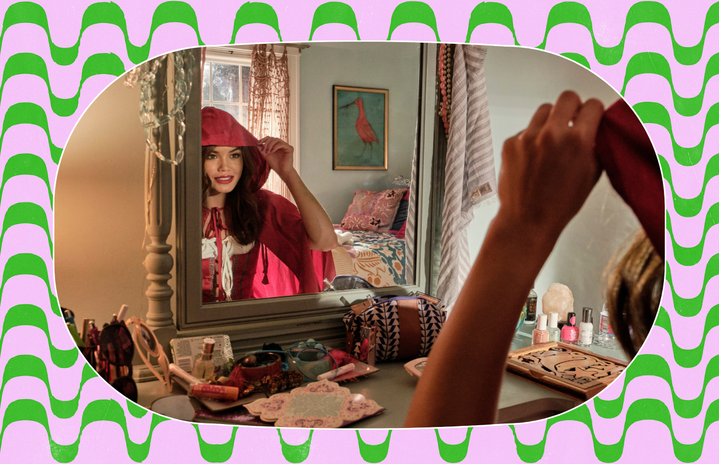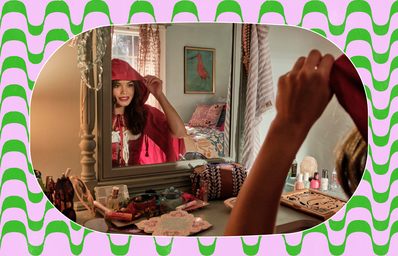Halloween is fast approaching and I can’t be the only one who is frantically searching for a costume idea. When I think of the options I’m faced with there seems to be a startling lack of diversity. Sexy nurse, sexy bunny, sexy angel… the list goes on. It’s not a revolutionary statement to say that female Halloween costumes are disproportionately marketed towards the provocative. Fishnet stockings, six-inch stilettos, and lace bustiers are perfectly commonplace on Halloween, something that at any other time of the year would only normally be seen in the window of an 18+ store. At this very moment a black latex bodysuit (circa Catwoman 2004) is probably in the shopping basket of at least five women within a mile radius of me. Why do we do it to ourselves? Why do we squeeze and squash and suck ourselves into these tiny outfits, if they can even be called outfits, since a lot of them seem more like gravity defying works of lycra-based art. The other question: can it really be called empowering?
As women, we’re told from a young age what we are and what we aren’t. Everything marketed towards girls is pink, frilly and usually covered in princesses or ponies. Sharon Lamb and Lyn Mikel Brown noted in Packaging Girlhood: ‘Feminine for little girls is coded pink… It announces sweetness, innocence and security’ (Lamb, Brown, 2006, Packaging Girlhood). The ideal for young girls is to be docile and demure and most of us conform to that without even thinking about it because we’re too young to understand the sinister implications. We’re too young and naïve to understand that such limited takes on femininity can lead to girls feeling confused and constrained if they don’t fit this so-called ‘norm’. As we grow up, that ideal changes. Suddenly we have to be alluring and suggestive. No longer the passive little girl, we are told to stand straight, unbutton our tops and be grateful for any attention we get. Should we really feel empowered by this explicit objectification?
There is no doubting that for many women, baring skin makes them feel beautiful and powerful. I myself love to wear short skirts and mini dresses, but I also cannot ignore the reason why showing my body makes me feel this way. Humans aren’t born with the inherent knowledge that wearing less clothing is ‘risqué.’ We have been told this time and time again, and now it’s so ingrained in our thinking that going against it, by donning something akin to Paris Hilton’s iconic bunny outfit at Haylie Duff’s 2005 Halloween party, makes us feel sexy and provocative. Elizabeth Grater puts it best in her dissertation ‘The rise of Slut-o-Ween’: ‘The market for heterosexualized, unvaried expressions of sexuality that are designed for the desire and pleasure of men has ‘become so fundamental to the experience of femininity that it is effectively invisible.’’ (Grater, 2010, The Rise of “Slut-o-ween”: Cultural Productions of Femininity in Halloween Costumes). Do we really dress this way for ourselves? Or is every marketing trick in the book used on us from adolescence to convince us that ‘slutty’ is what we want, ‘slutty’ is our choice and ‘slutty’ is empowering?
Yet if we strip all this away and ignore the ideological gender roles that have been placed on us since birth, a body is a body and there’s absolutely nothing wrong with showing it off. I have no intention of telling anybody what to wear. However, I do feel that it’s important to understand why so many of us dress like this so as not to ignore the hegemonic sexism that forms the basis for how we view modern femininity. It was Laura Mulvey who coined the term ‘the Male Gaze’ to describe how everything in the mainstream media is oriented to appeal to men. You only have to look at franchises like Ann Summers to see the reinforcement of such a concept. After all, here you have an entire business marketed around the idea that women should dress with the expectation of being looked at by men. Not only does this negatively impact the mental health of countless women, it also unduly emphasises physical appearance as the most important female attribute. Women are not simply objects onto which heterosexual male desire can be projected, which is why the motives behind such hypersexualised Halloween costumes (especially ones based around the fetishization of young girls, such as the ever-persistent ‘sexy schoolgirl’ concept) can sometimes be questioned. For generations we’ve been told how we should dress and who we should be, both of which have been based on the tastes of men. It’s time to start living for ourselves.
So, are slutty Halloween costumes sexist or empowering? Well, I don’t have a definitive answer to that, much as I’d like one. I asked my friends and got mixed results. Two replied with an enthusiastic yes, but another acknowledged that perhaps it’s more nuanced than that. I’m a firm believer in bodily autonomy and that extends to wearing whatever you want. Let’s not forget what damage generations of patriarchy have done but let’s also reclaim all that we can. After all, if we want to deconstruct the stereotypes around femininity and prove that it is far more than just the elicitation of male desire, we need to keep questioning these popular traditions, however harmless they may appear. Whatever you choose to wear this Halloween, the most important thing is to have fun and feel amazing.

